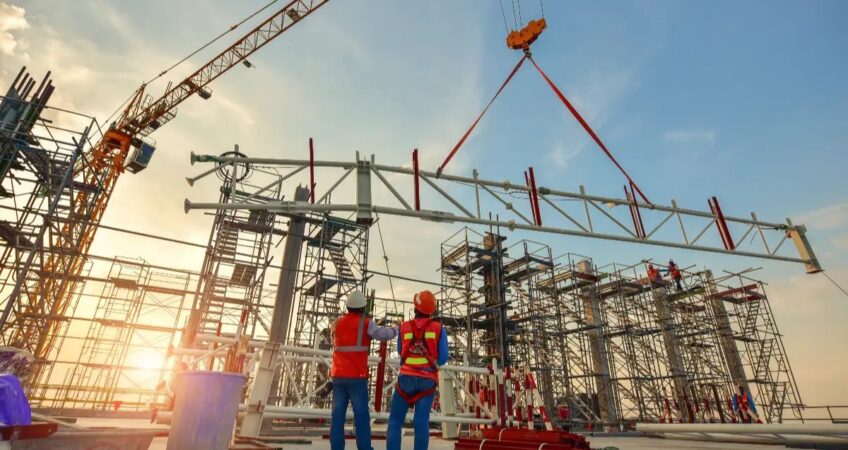Introduction – Why Weather-Resilient Structures Matter
The UK’s climate is changing. Recent decades have seen an increase in flooding, storms, heatwaves, and high winds, creating challenges for homes, offices, and infrastructure. For property owners, developers, and local councils, the question is no longer if extreme weather will strike but when.
This is where resilient structural engineering becomes essential. At Ecoden Constructions Ltd., we design buildings that do more than stand tall; we ensure they withstand unpredictable conditions while staying safe, sustainable, and compliant with UK Building Regulations.
Understanding the Challenge – UK Weather Trends
The UK Met Office has confirmed:
- Heavier rainfall events causing flash floods in urban areas.
- Rising sea levels affecting coastal communities.
- More frequent storms damaging roofs and foundations.
- Heatwaves increasing thermal stress on materials.
Traditional building methods are often unprepared for these changes, putting structures and occupants at risk. Resilient engineering provides solutions that protect both investments and communities.
What Is Resilient Structural Engineering?
Resilience in engineering means creating structures that can withstand, adapt to, and recover quickly from natural hazards. Unlike conventional design, resilience considers:
- Future weather extremes, not just past patterns.
- Long-term sustainability alongside safety.
- Flexible systems that can adapt to evolving climate demands.
At Ecoden, we combine structural calculations, architectural drawings, and regulatory compliance to deliver resilience from blueprint to completion.
Key Design Principles for Weather-Resilient Structures
1. Flood-Resistant Foundations
- Raised floor levels above predicted flood lines.
- Use of flood-resistant materials such as concrete blocks and waterproof membranes.
- Integration of sustainable drainage systems (SuDS).
2. Wind-Resistant Frameworks
- Strengthened load-bearing frames with recycled steel.
- Aerodynamic roof designs to reduce uplift.
- Secure connections between structural elements.
3. Thermal Resilience
- Use of low-carbon concrete and CLT (Cross-Laminated Timber) for thermal stability.
- Passive design strategies: insulation, ventilation, and shading.
- Materials designed to expand/contract safely in temperature shifts.
4. Adaptive Design
- Modular systems for rapid replacement of damaged components.
- Retrofitting options for older UK properties.
- Smart monitoring systems (digital twins) to assess structural health in real time.
Learn more about our Retrofitting and Renovation services.
Role of Structural Calculations in Resilient Design
Resilience begins on paper. Precise structural calculations allow engineers to predict how buildings will respond under stress whether from floodwater pressure, wind uplift, or thermal expansion.
Ecoden’s engineers provide calculations tailored to extreme weather scenarios, ensuring buildings not only meet UK Building Control standards but exceed them for long-term resilience.
Explore our Structural Calculations services here.
Case Study – Resilient Housing in Flood-Prone Areas
In towns across Yorkshire and the Midlands, flooding has devastated properties. Through resilient design, engineers now incorporate:
- Elevated structures above flood zones.
- Reinforced ground floors with waterproof materials.
- Quick-drain landscaping systems to reduce flood risks.
Ecoden’s site consultation services help property owners identify vulnerabilities and design structural solutions that protect investments against future weather events.
Materials That Enhance Resilience
Resilient design relies on durable, sustainable materials:
- Reinforced concrete with waterproof additives for flood zones.
- Recycled steel frameworks for strength against wind loads.
- CLT panels for lightweight yet durable structural performance.
- Hempcrete and natural insulation to handle thermal fluctuations.
Regulatory Framework and Compliance
The UK government is tightening rules on building resilience:
- Approved Document A (Structure): Requires designs to handle disproportionate collapse.
- Approved Document C (Site Preparation and Resistance to Contaminants and Moisture): Covers flood and damp resilience.
- Future Homes Standard 2025: Encourages energy-efficient and climate-ready homes.
Ecoden ensures all resilient designs align with Building Regulations Drawings for smooth approval by Building Control.
Business Benefits of Weather-Resilient Design
Developers and property owners benefit significantly from resilience:
- Reduced repair and insurance costs.
- Enhanced property value with “climate-ready” appeal.
- Increased tenant satisfaction and safety.
- Faster project approvals through regulatory compliance.
For investors, resilience is no longer optional it’s a competitive advantage.
Overcoming Challenges in UK Resilient Construction
- Cost concerns: While resilient materials may cost more upfront, Ecoden demonstrates long-term savings through lifecycle analysis.
- Awareness gaps: Many homeowners underestimate flood and storm risks. Our structural consultation educates and prepares clients.
- Retrofitting difficulty: Older UK properties can be upgraded using smart retrofits without compromising heritage aesthetics.
Future Trends in Resilient Structural Engineering
- Digital twins and AI for real-time structural monitoring.
- Modular housing for disaster-prone areas.
- Nature-based solutions like living seawalls and floodplains.
- UK-wide adoption of climate resilience standards by 2030.
Ecoden Constructions is already preparing clients for these innovations, ensuring projects remain future-proof.
Conclusion – Build Resilience with Ecoden
Extreme UK weather is not going away but buildings can be designed to withstand it. Resilient structural engineering ensures safety, sustainability, and long-term value.
At Ecoden Constructions Ltd., we specialise in structural calculations, building regulations drawings, and resilient retrofits tailored to each project. Whether you’re building new or upgrading existing properties, our fast, reliable, and eco-friendly solutions deliver resilience you can trust.
Don’t wait for the next storm or flood.
Contact Ecoden Constructions today to design weather-resilient structures that protect your investment and the people who depend on it.

